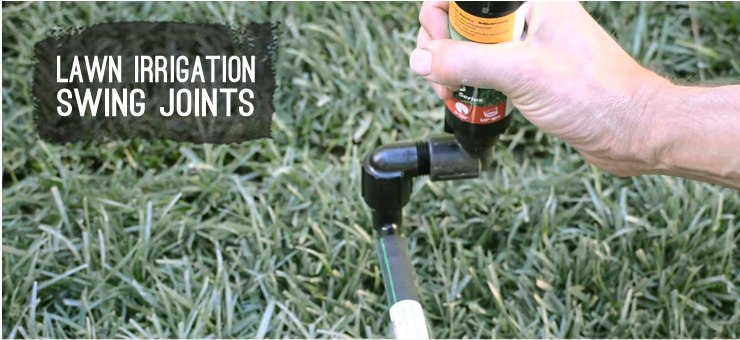How to Use Swing Pipe to Install Sprinkler Heads

Are you tired of having to water your lawn by hand using a gardening hose or sprinkler attachment? If so, then you might want to consider installing your own underground sprinkler system. Sure, you may be thinking, "There's no way I could do that myself! I'd have to call a professional.". However, the truth is that installing your own sprinkler system is a lot easier than you may think. Not to mention, by taking on the job yourself, you can save anywhere from 30-40% on the total cost of the project.
The key to an easy DIY sprinkler installation project is using swing pipe, also commonly referred to as "Funny pipe". Read on to discover what swing pipe is, how to use it in your sprinkler installation, and how it can help make your life easier.
What is Swing Pipe?
Swing pipe is a type of flexible tubing that's made of a durable form of polyethylene. It's commonly used in the installation of underground sprinkler systems as a means of connecting sprinkler heads and rotors to the PVC pipe underneath.
Generally, swing pipe does cost a little more than traditional PVC pipe, but given its durability and the fact that it's so flexible, many would agree that the additional expense is more than worth it.
Installing Swing Pipe
If you're thinking about taking on your own sprinkler system installation project, then you'll definitely want to use swing pipe. It will make your life a lot easier and cut down on the amount of time and number of tools needed to get the job done. Of course, if you've never worked with swing pipe before, then you might be wondering what steps you'll need to take to utilize it properly. Check out this great video by Hunter on how to use swing pipe.
For starters, you'll need to make sure that you have all the necessary tools on hand to properly install your swing pipe on your sprinkler system. Fortunately, you don't need much. The tools you'll need include:
- the swing pipe itself
- a shovel
- a sharp knife or pipe cutter
- spiral barb fittings (specifically, swing pipe fittings)
It's also important that you have a design and layout plan for your underground sprinkler system before you begin digging (and that you have obtained permission to dig from your local utility companies).
To install your piping, start by digging a trench with the shovel according to your plans. When digging in areas where there will be sprinkler heads, be sure to leave plenty of room for your swing pipe.
Once all of your trenches are dug, it's time to lay your lateral PVC pipe; this is the piping that your swing pipe will ultimately connect to. From there, you'll need to locate each point where you'll have a sprinkler head and measure the length of swing pipe you'll need. Then, you can cut the piping accordingly and fit it to the PVC pipe itself, using your spiral barb fittings to secure the connection. Repeat these steps with each of the swing pipes you install on your sprinkler heads.
Advantages of Swing Pipe
There are many ways in which the use of swing pipe can make your sprinkler installation project a lot easier. For starters, because the piping itself is flexible, you can easily run it from your above-ground sprinkler head down to the PVC pipe itself, regardless of the terrain. Because of this, you can also make easy adjustments to your sprinkler head placement as needed without having to re-route or re-connect the swing head connection itself.
In addition to their ease of installation, swing piping also tends to be more durable than other options available. This is especially true when it comes to impacts from pedestrians walking on your lawn or even heavy equipment running over your lawn.
Swing pipe is also flexible without being flimsy; the same cannot be said of other piping options available for sprinkler system. Most others are either flexible yet flimsy or durable but not flexible. With swing piping, you get the best of both worlds.
Finally, although the up-front costs associated with using swing pipe is a little more expensive than other choices, you'll usually save money over time when you use swing piping because you'll have fewer repairs and replacements to worry about down the road.
As you can see, installing your own underground sprinkler system (and saving money in the process) doesn't have to be rocket science. With some basic instruction, the right set of tools, and some help from swing piping, you'll be well on your way to having your own sprinkler system on your property in no time. From there, you can enjoy being able to keep your lawn properly hydrated--even during the hottest and driest days of summer--without having to deal with the hassle of leaving your home to water your grass by hand. Plus, you'll add resale value to your home!